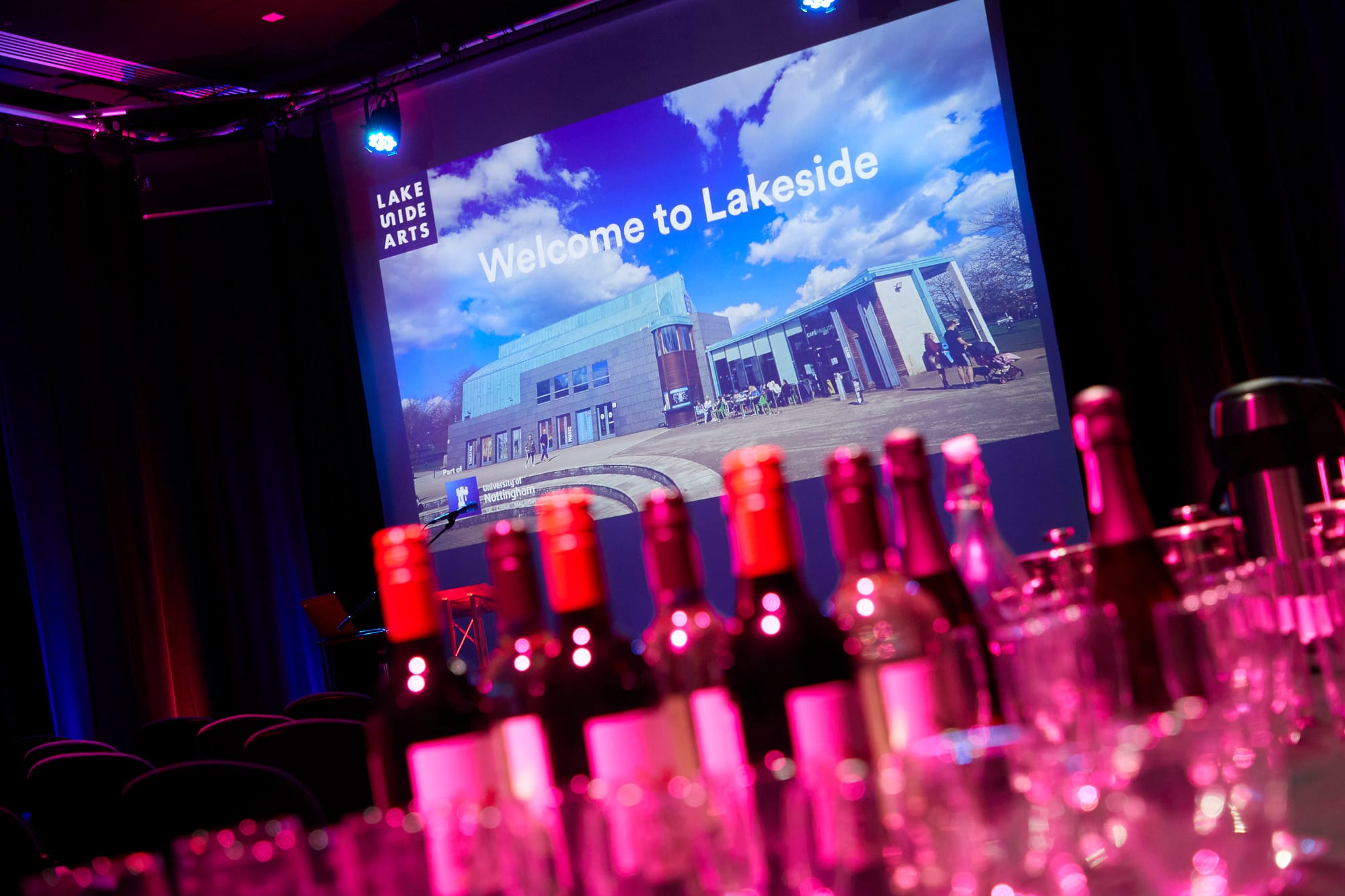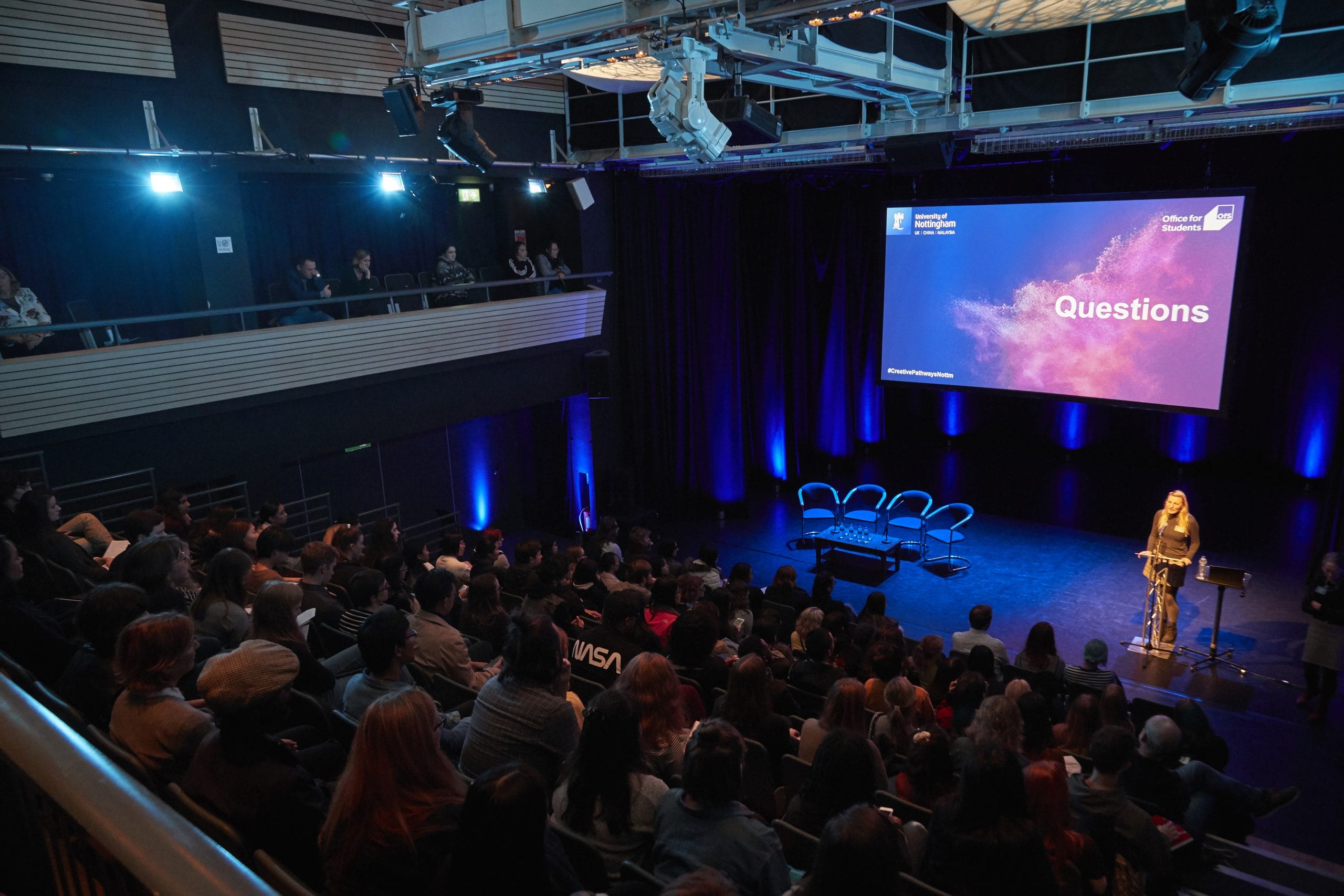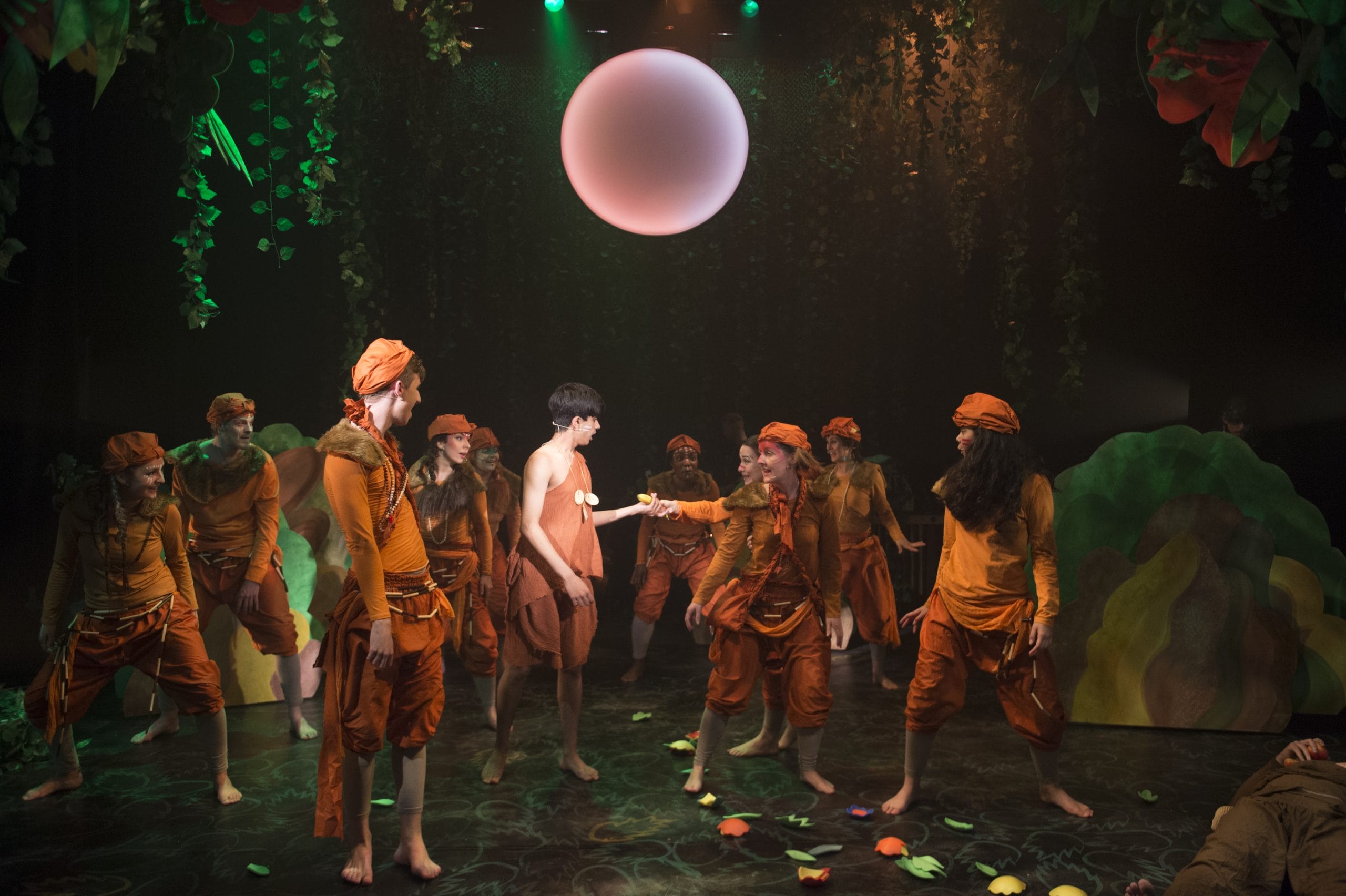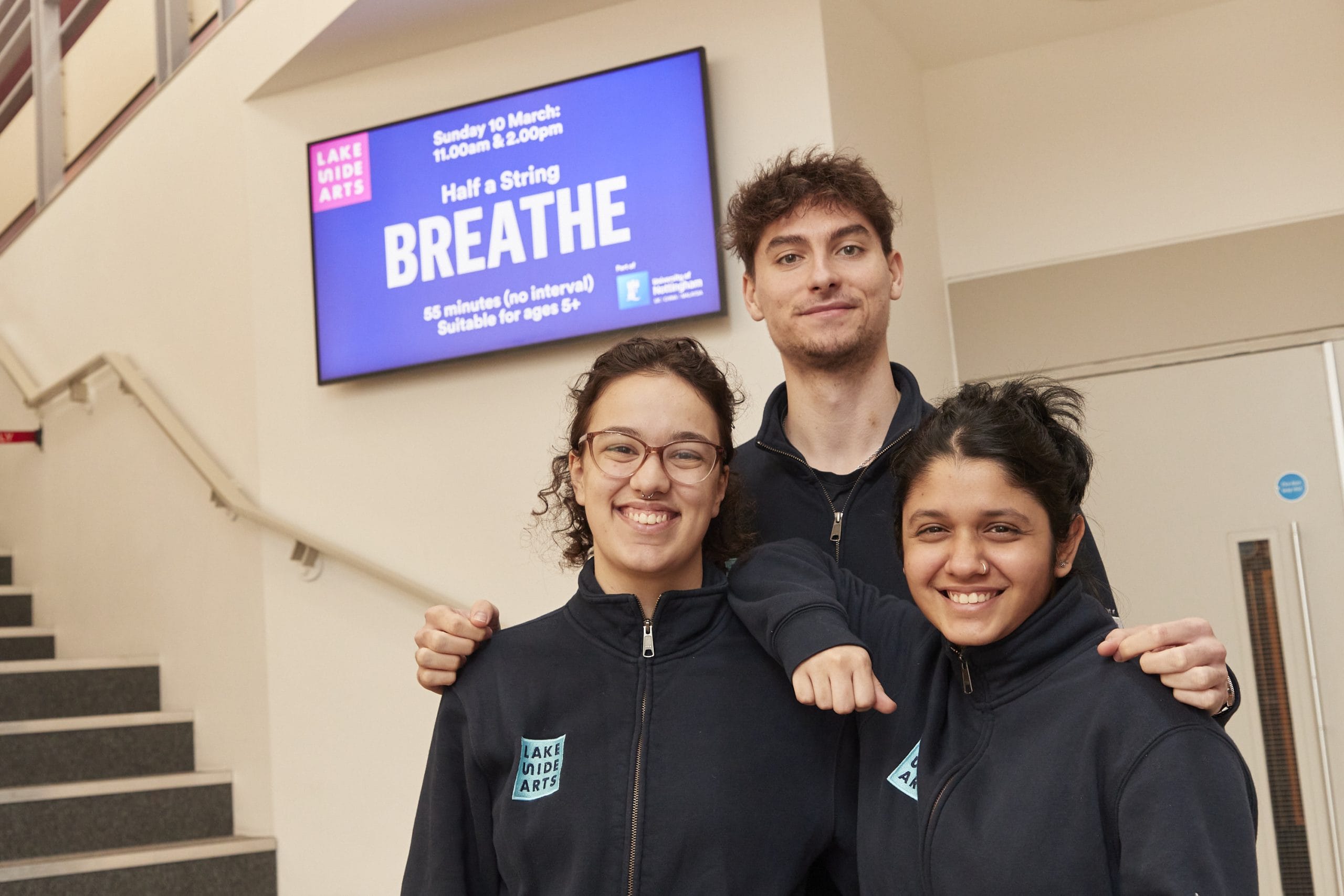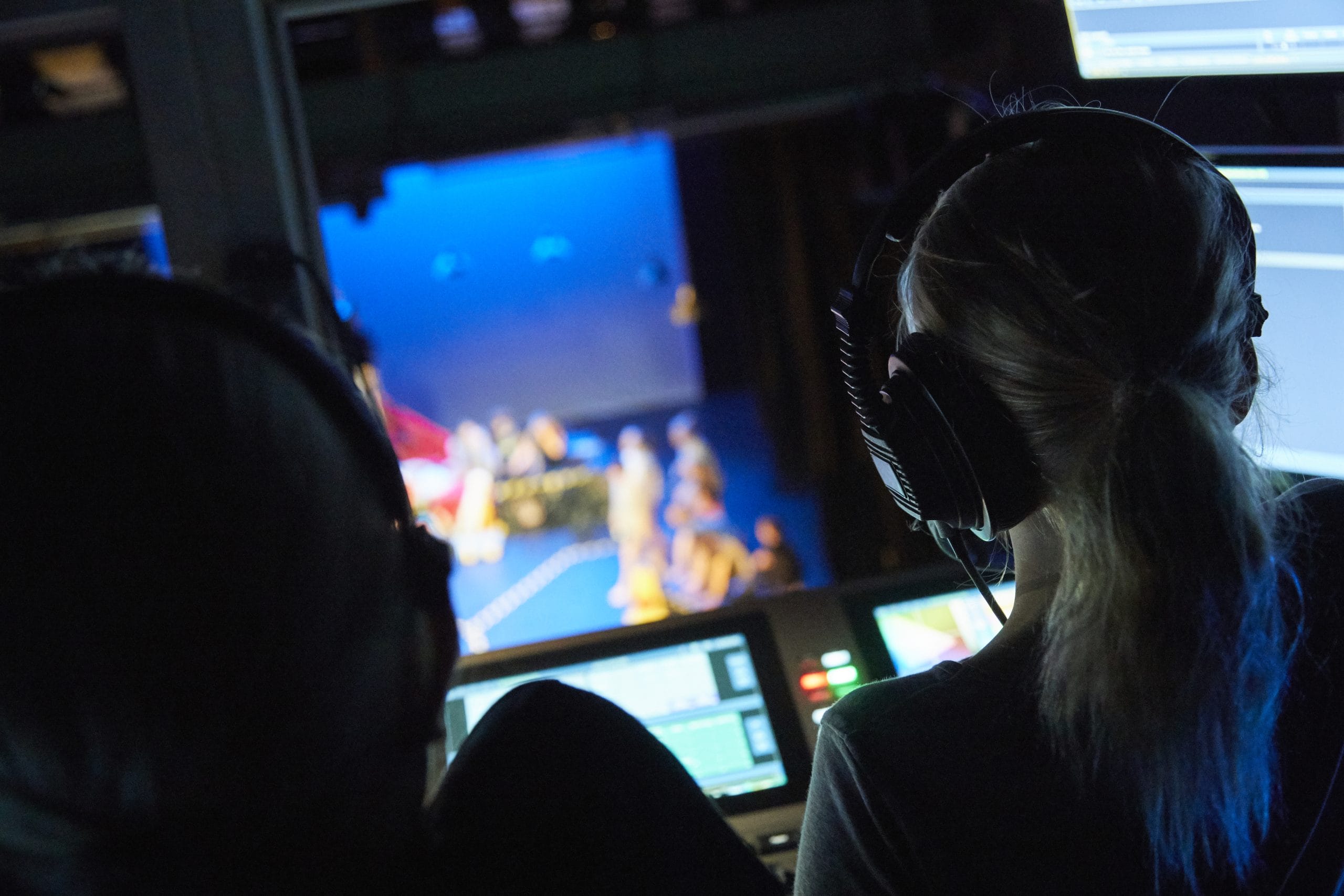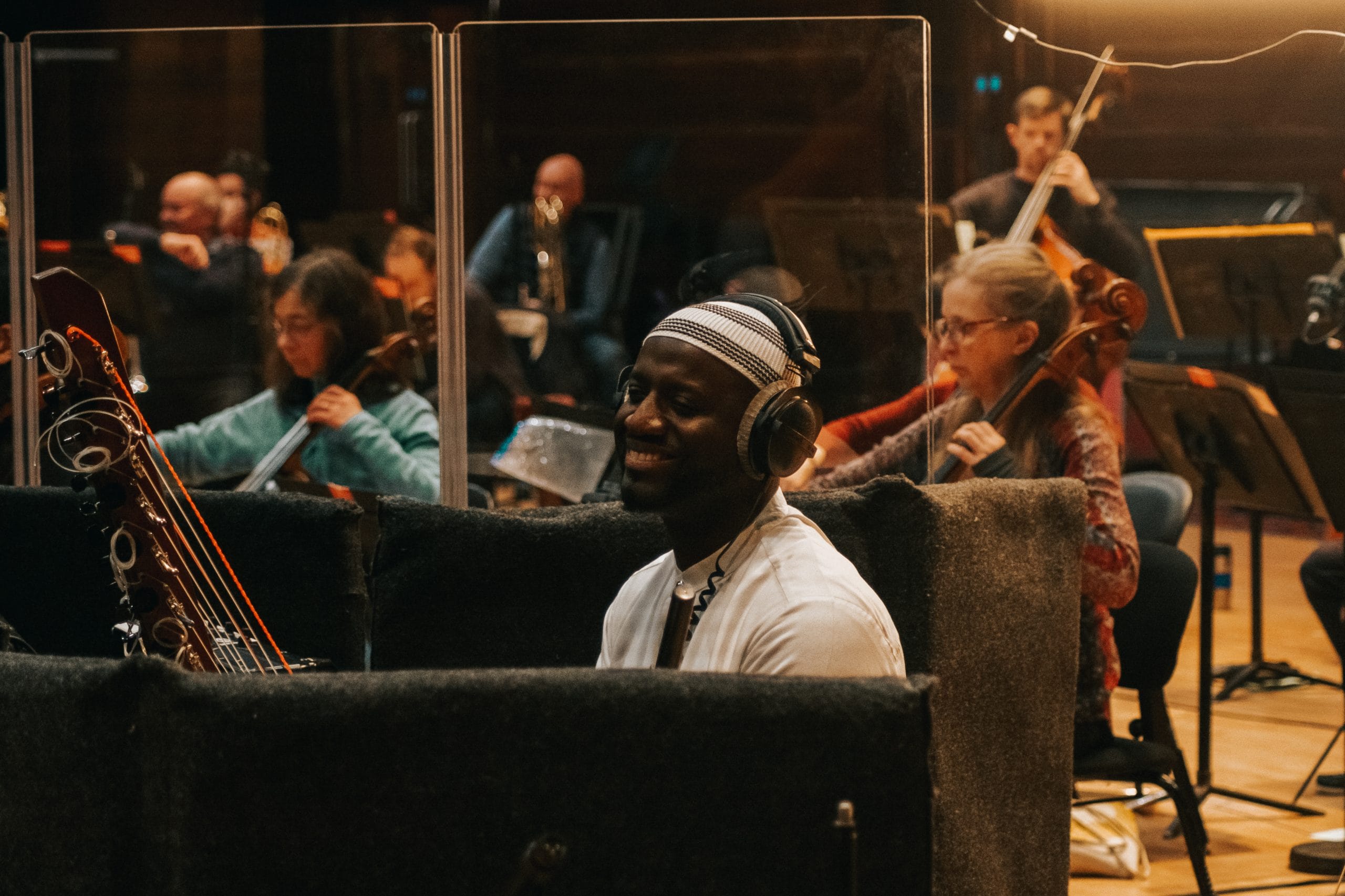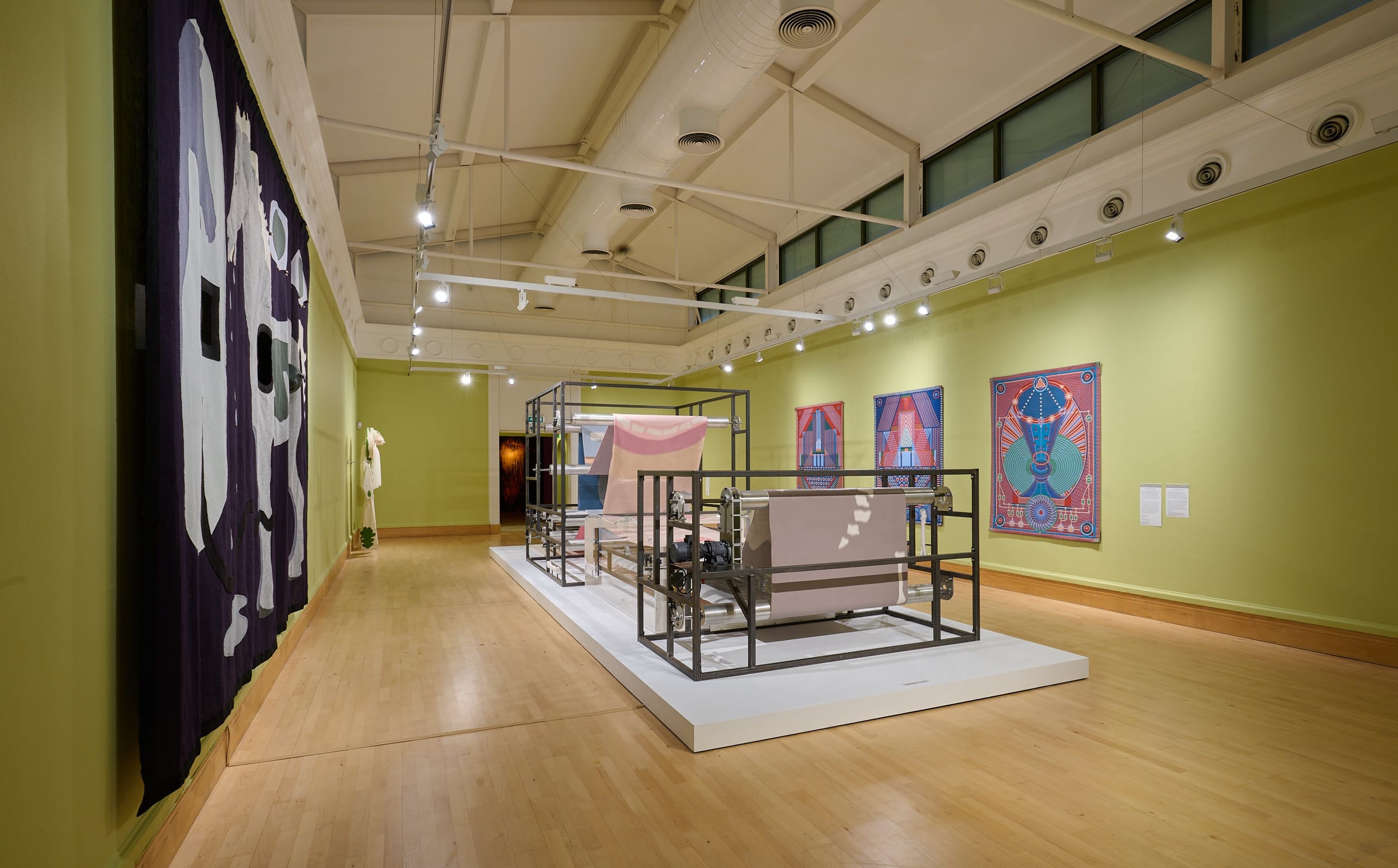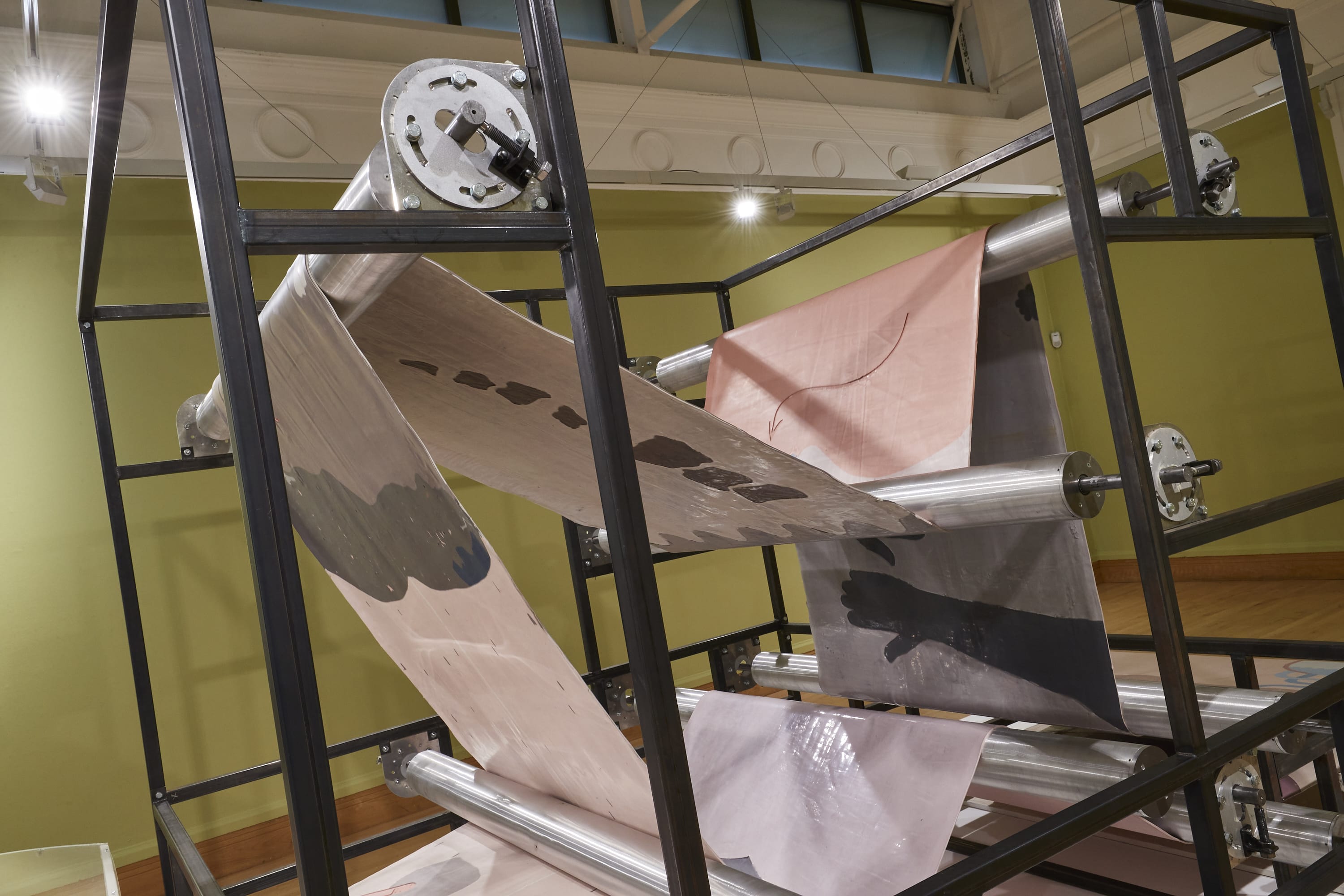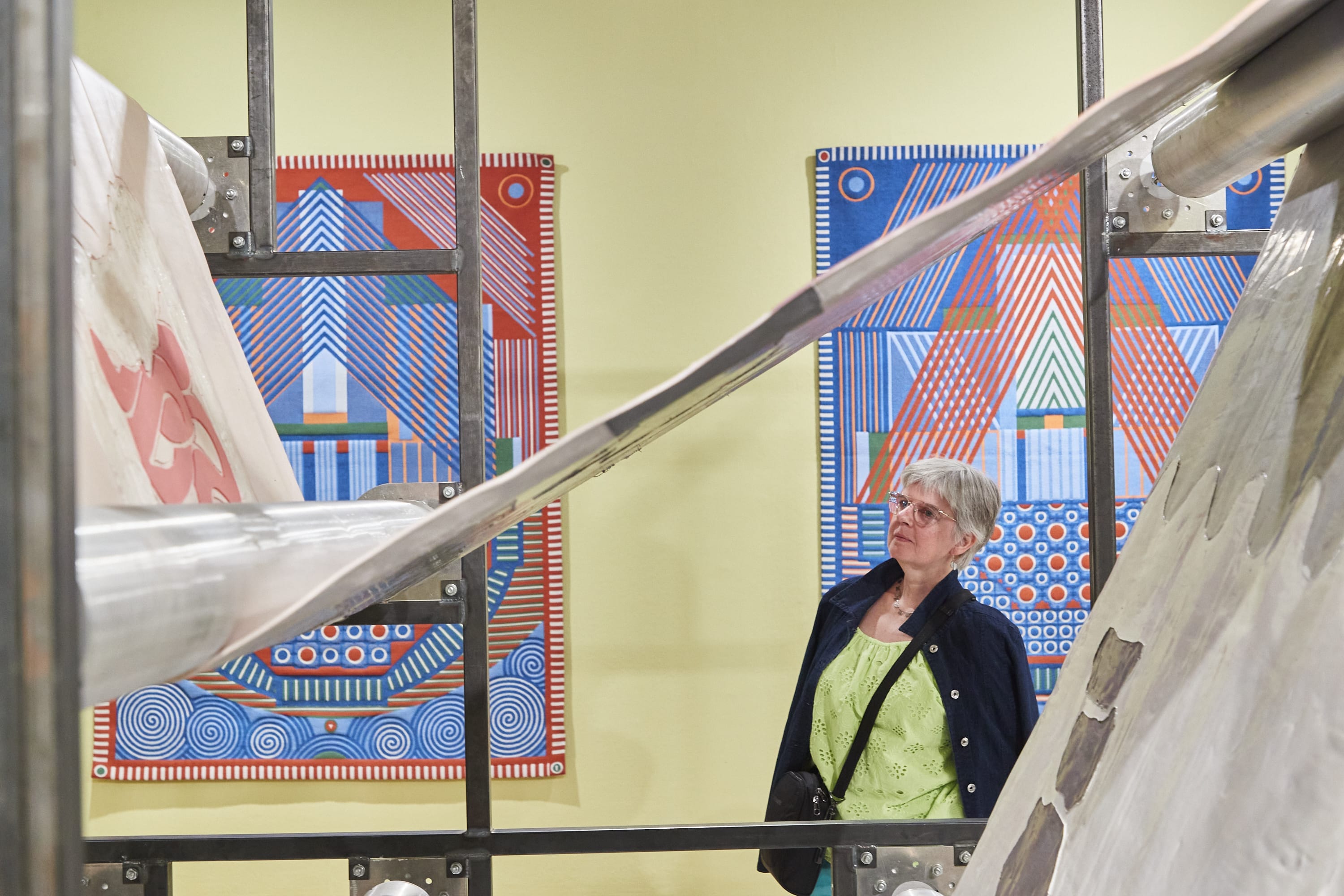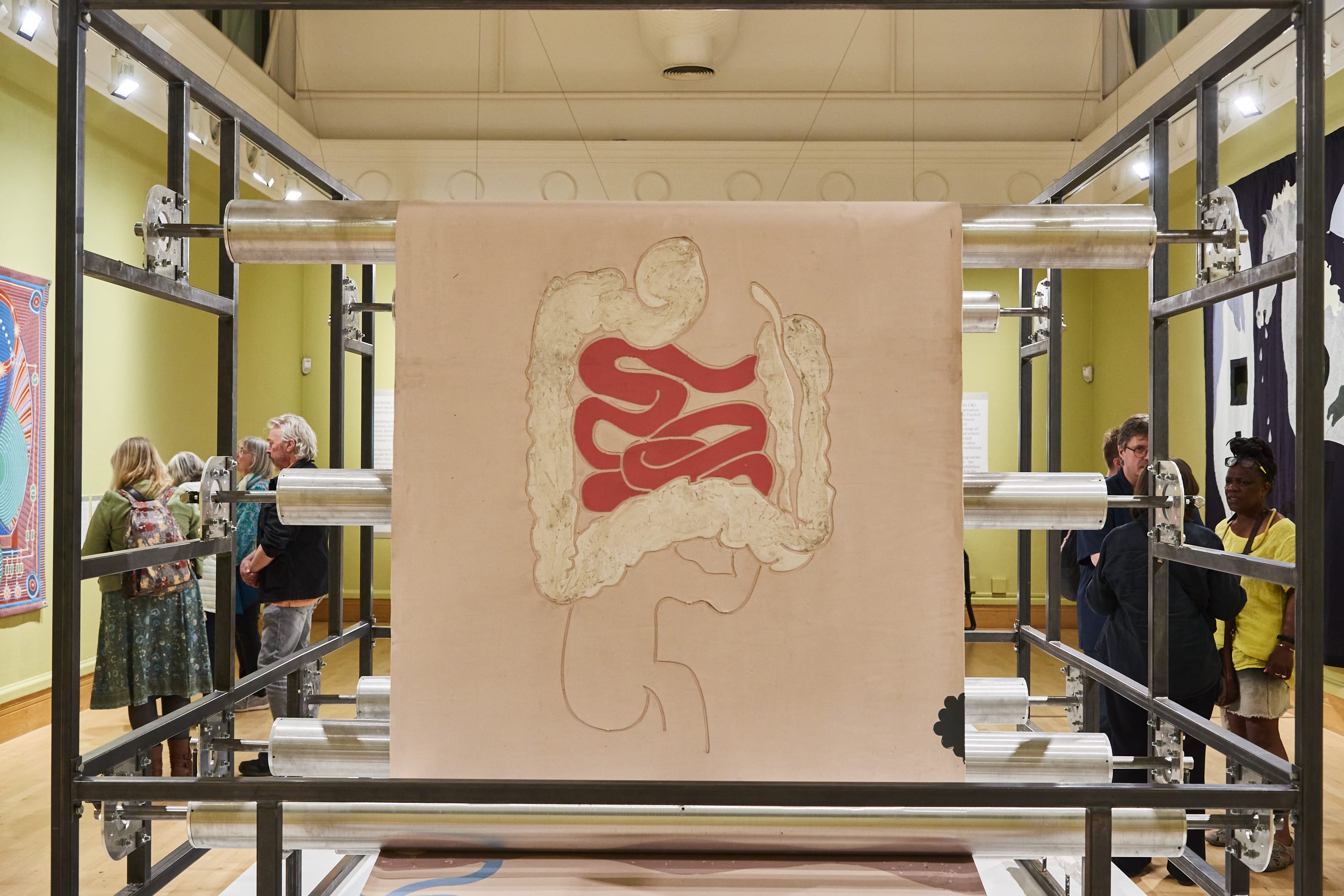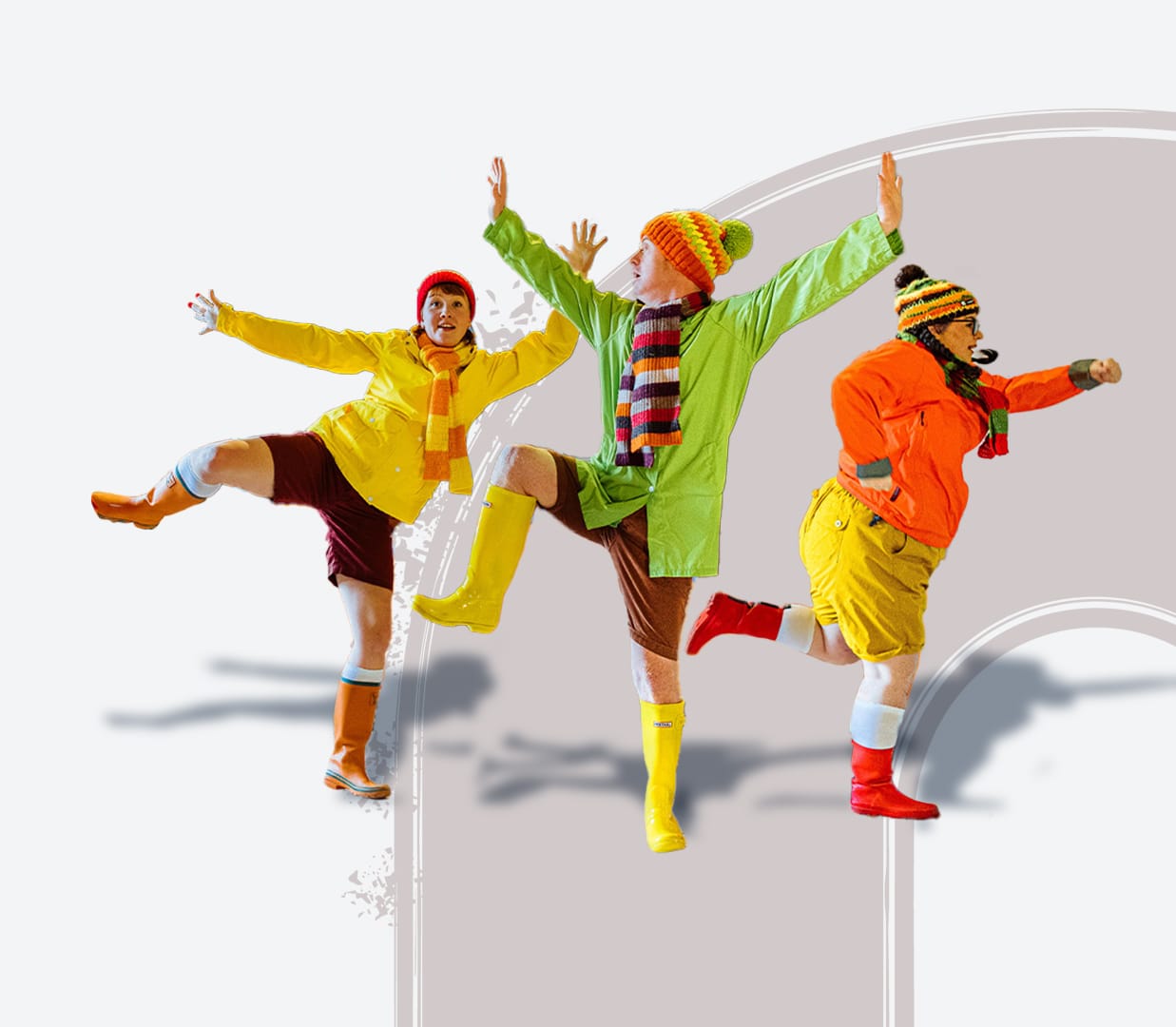Dominating the entrance to the Material Worlds’ exhibition is Holly Hendry’s colossal installation ‘Slacker.’ Combining an industrial printing press with an anatomical tapestry, Hendry has us confront what is usually hidden. Discover more about the artist behind the work.
Material Worlds: Contemporary Artists and Textiles is a free group exhibition featuring radical and exciting contemporary artists using textiles to explore ideas of the body, identity, gender, race, heritage, myth and folklore. The potential of textiles as an art form has been pushed to extraordinary limits creating works that are theatrical, bold, unsettling and humorous.
Holly Hendry (b. 1990-,London) a London based artist, attended the Slade School of Fine Art, where she gained a BA in Fine Art, and then the Royal College of Art in London, where she completed a MA in Sculpture. Throughout her career, she has received significant critical acclaim, including winning the 2019 Arts Foundation Award for Experimental Architecture and the Woon Foundation Prize for Painting and Sculpture in 2013. Her artwork has been exhibited globally, including in the SCAD museum of Art, Georgia, the Hayward Gallery, London, STEAMhouse, Birmingham and Esch2022, Esch-sur-Alzette, Luxemburg.
A recurring theme in Hendry’s practice, is the revelation of interiority, investigating what is hidden beneath the skin, the soil, or the inner workings of our built environment. For example, 2018 Liverpool Biennal piece, Cenotaph, looks at the internal anatomy of the city, using segments of industrial pipes to resemble its outpouring innards. Hendry takes these microscopic or hidden elements and, paradoxically, transforms them into exaggeratedly enormous installations.
Hendry’s installations are usually site-specific, becoming inseparable from their environments. Her sculpture Slackwater was specifically build in response to the history of it’s riverside location, the Thames. “Everything always starts with thinking about the space and spending time in it. There is usually something that relates to current or ongoing research,” says Hendry.
After this initial stage, she describes the creative breakthrough as something almost physical: “The real work happens when the research overflows or combusts and something has to come out of it; a bit like being sick!” she laughs. She uses 3D design software to visualise how her work will interact with the space. Incredibly, her installations are largely hand-made; an achievement which considering the scope of the materials and the sheer size of her structures cannot be understated. Hendry uses a vast range of materials: Jesmonite, plaster, foam, wood, steel, silicone, ash, lipstick, even soap. She plays with these materials, stretching their physical and symbolic capacity. Plastic and metal may appear soft or bitten into, creating visually and texturally diverse works. This also produces a real sense of tactility: “I think it’s fundamental—that desire to touch and understand, to feel inside the thing you can see with your eyes,” she explains.
Watch Holly Hendry further discuss her processes and inspiration:
Slacker (2019)
Slacker (2019), one of her most dynamic and exciting pieces, is now featured in Lakeside Arts’ Djanogly Gallery until 31 August 2025, as part of Hayward Gallery’s touring exhibition.
When you first come upon Slacker it feels like you have stepped into a textiles factory; with a large printing press completely dominating the space with its whirring steel rollers and faint drumming sounds. Art becomes an immersive experience. The rubbery ribbon fed continuously through the machine, represents a surreal amalgamation of exaggerated and distorted human body parts, food and detritus with organs, skin, flesh and bones. This focus asks us to confront the inherent violence often sanitised in medical drawings, presenting the body as a learning tool devoid of emotional resonance.
While this may feel slightly horrifying to some, the profound sense of distortion and the cartoon-like quality makes it amusing: “There is this almost slapstick approach to materials themselves,” she said. “Trying to stretch them like a cartoon or bend them in ways they shouldn’t go.” The gory subject matter is further toned down by the soft pastel palette, predominated by varying light chalky hues of bone grey and fleshy pink. This is interspersed with sudden brighter bursts of colour, for example the vividly pink intestines. The intestines and their symbolism of breakdown and transformation are common focuses in her work. “Through the process of incorporating one thing into another thing, outlines and edges become blurred, reconstituted or renamed into something else, and that presents opportunities to undo or redo certain binaries.” This focus on these squelchy, fragile intestines, serves as a reminder of our mortality.
In Slacker, the human form is intertwined with and dependent on machinery for movement. This creates a powerful metaphor for our entangled relationship with technology, how it extends and collides with our bodies. The installation becomes a poetic exploration of human experience, blurring the lines between the organic and industrial, vulnerability and control.
The Material Worlds exhibition is open to visit until 31st August 2025 at the Djanogly Gallery, Lakeside Arts. Find more details here.


